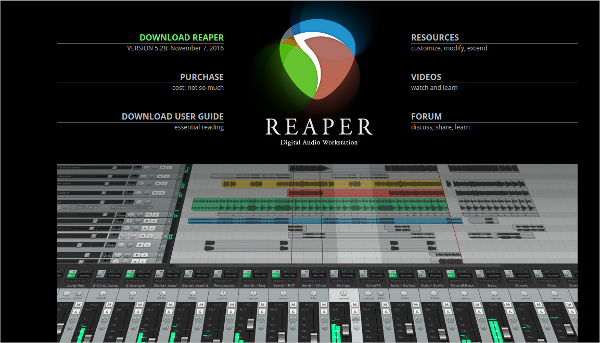These advanced steps are primarily for system administrators and others who are familiar with the command line. You don't need a bootable installer to upgrade macOS or reinstall macOS, but it can be useful when you want to install on multiple computers without downloading the installer each time.
Note: The Prezi Next desktop app is available for download on both Windows and Mac and can be used with a Prezi Next Plus or higher license. Luckily it’s a breeze to upgrade your license and get access to this and all the other great features our Prezi plans have to offer.
Mac for ableton live 9. However, there will be lots of tutorials to guide as you proceed so don’t fret if you are a new user. Compared to other sequencers, this app appears more compact with a multitude of different parameters intended for a single screen usage so it may seem complicated to some. NameAbleton Live 9.7 Suite-mac-tnt.com.zipSize1.8 GBCreate on2019-11-30FileAbleton Live 9.7 Suite-mac-tnt.com.zip (1.8 GB)Downlaod Link:Ableton Live 9.7 Suite for MAC is an excellent digital audio workstation software developed to provide tools for editing and creating various musical compositions for musicians or producers to perform live onstage. The latest full version of Ableton Live 9.7 Suite for MAC crack was released on 4th October 2016 with many updates and bug fixes.
Download macOS
Install Chrome on Windows. Download the installation file. If prompted, click Run or Save. If you chose Save, double-click the download to start installing. Start Chrome: Windows 7: A Chrome window opens once everything is done. Windows 8 & 8.1: A welcome dialog appears. To install Office, try signing in directly to the Microsoft 365 Software page instead. Select the language and bit-version you want (PC users can choose between 32-bit and 64-bit), and then click Install. See Steps 2 and 3 on the PC or Mac tabs above to help you with the rest of the install process.
Install Mac Apps On Windows
Find the appropriate download link in the upgrade instructions for each macOS version:
macOS Catalina, macOS Mojave, ormacOS High Sierra
Installers for each of these macOS versions download directly to your Applications folder as an app named Install macOS Catalina, Install macOS Mojave, or Install macOS High Sierra. If the installer opens after downloading, quit it without continuing installation. Important: To get the correct installer, download from a Mac that is using macOS Sierra 10.12.5 or later, or El Capitan 10.11.6. Enterprise administrators, please download from Apple, not a locally hosted software-update server.
OS X El Capitan
El Capitan downloads as a disk image. On a Mac that is compatible with El Capitan, open the disk image and run the installer within, named InstallMacOSX.pkg. It installs an app named Install OS X El Capitan into your Applications folder. You will create the bootable installer from this app, not from the disk image or .pkg installer.
Use the 'createinstallmedia' command in Terminal
- Connect the USB flash drive or other volume that you're using for the bootable installer. Make sure that it has at least 12GB of available storage and is formatted as Mac OS Extended.
- Open Terminal, which is in the Utilities folder of your Applications folder.
- Type or paste one of the following commands in Terminal. These assume that the installer is still in your Applications folder, and MyVolume is the name of the USB flash drive or other volume you're using. If it has a different name, replace
MyVolumein these commands with the name of your volume.
Catalina:*
Mojave:*
High Sierra:*
El Capitan: - Press Return after typing the command.
- When prompted, type your administrator password and press Return again. Terminal doesn't show any characters as you type your password.
- When prompted, type
Yto confirm that you want to erase the volume, then press Return. Terminal shows the progress as the bootable installer is created. - When Terminal says that it's done, the volume will have the same name as the installer you downloaded, such as Install macOS Catalina. You can now quit Terminal and eject the volume.
* If your Mac is using macOS Sierra or earlier, include the --applicationpath argument, similar to the way this argument is used in the command for El Capitan.
Use the bootable installer
After creating the bootable installer, follow these steps to use it:
Before running out to buy Microsoft Word (or another industrial-strength and expensive) word processing program for your Mac, remember that Apple includes a respectable word processor with OS X. The program is TextEdit, and it call s the Applications folder home.The first order of business when using TextEdit (or pretty much any word processor) is to create a new document. It’s about as easy as opening the program itself. There’s really not much to it. Download word mac.
- Plug the bootable installer into a compatible Mac.
- Use Startup Manager or Startup Disk preferences to select the bootable installer as the startup disk, then start up from it. Your Mac will start up to macOS Recovery.
Learn about selecting a startup disk, including what to do if your Mac doesn't start up from it. - Choose your language, if prompted.
- A bootable installer doesn't download macOS from the Internet, but it does require the Internet to get information specific to your Mac model, such as firmware updates. If you need to connect to a Wi-Fi network, use the Wi-Fi menu in the menu bar.
- Select Install macOS (or Install OS X) from the Utilities window, then click Continue and follow the onscreen instructions.
Learn more
Hp printer driver mac. For more information about the createinstallmedia command and the arguments that you can use with it, make sure that the macOS installer is in your Applications folder, then enter this path in Terminal:
Catalina:

Mojave:
High Sierra:
Install Ipad App On Mac
El Capitan:
